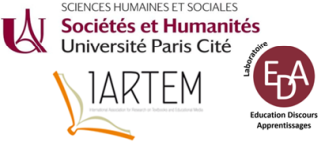This ongoing study investigates the didactic strategies employed by an English educator at Elementary School 1, Curitiba's Municipal Education Department, Brazil, where teaching materials are exclusively designed by the teaching staff. Focused on refining instructional activities, the study's central question is “Which parameters serve as references for constructing effective didactic instructions in English for children?”. Grounded in Applied Linguistics, the research, still in progress, has a qualitative interpretative approach and draws on the constructs of Riestra (2004), Anijovich, Malbergier e Sigal (2007), Carlberg and Barbosa (2014), Zakhartchouk (2016), and Carrière (2021).The investigation involved a two-month observation of 4th-grade classes, aiming to understand the nuances of English instruction to young learners while interpreting attitudes and situations related to the process of understanding classroom instructions. During these observations, the lead teacher was interviewed about classroom instructions. We observed that the teaching materials used in the classroom were, for the most part, sourced from the internet and employed in a decontextualized manner. The statements were concise and provided limited information. Therefore, in a preliminary assessment, it is possible to assert that the teacher does not prioritize certain aspects in their preparation. Following the classroom observation phase, eight hours of instructional sessions were conducted, utilizing a didactic unit developed based on literature studies, observations, and student feedback through self-evaluation forms. Insights gleaned from the study highlight elements supporting the construction of didactic instructions (consignas), including: 1) articulation of learning objectives aligned with the instructional verbs that activate the semantic specification assumed by Bloom's Taxonomy (Bloom, 2001); 2) consideration of production/communication context tailored to specific audience needs; 3) integration of paralinguistic elements for enhanced comprehension (Bronckart, 1999); 4) encouragement of student creativity and diverse problem-solving approaches; and 5) promotion of social language use among students. The elements supporting the development of 'consignas' are not static, as they vary according to the period or activity. This research contributes with practical insights to the discourse on optimizing instructional strategies in English education for young learners, providing guidance for educators and researchers alike.
Carrière, Amélie. (2021). Penser la consigne en contexte scolaire pour favoriser la réussite des élèves. Education. hal-03442545f
Riestra, Dora. (2004). Las Consignas de Trabajo en el Espacio Socio-Discursivo de la Enseñanza de la Lengua. Thèse de Doctorat. FPE 328. Faculté de Psychologie et des Sciences de L'Éducation, Directeur: Prof. Dr. Jean Paul Bronckart. Genève, Université de Genève.
Zakhartchouk, Jean-Michel (2000). Les consignes au cœur de la classe : geste pédagogique et geste didactique. In: Repères, recherches en didactique du français langue maternelle, n°22. Les outils d'enseignement du français. pp. 61-81; doi : https://www.persee.fr/doc/reper_1157-1330_2000_num_22_1_2343

 PDF version
PDF version
